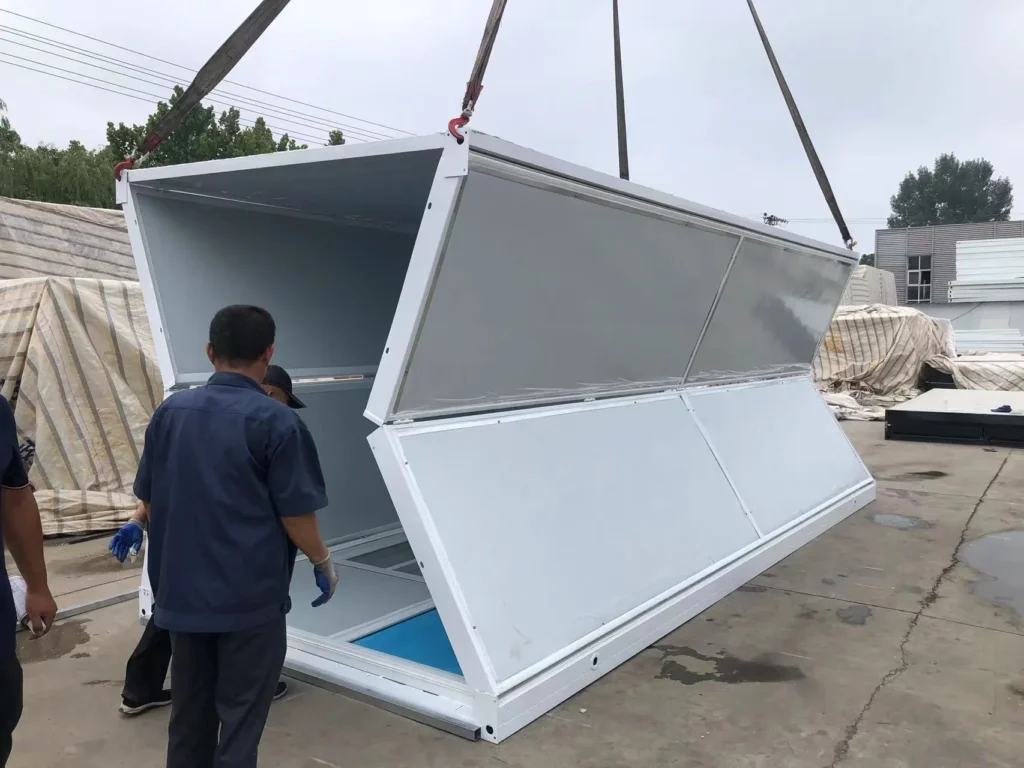SUMMER SALE FOR ALL CONTAINERS AND FREE EXPRESS INTERNATIONAL DELIVERY FREE EXPRESS INTERNATIONAL DELIVERY - OFF 50%! SHOP NOW
- +1-(860) 533-7110
Buy Direct and Save Large Stock Availability Flexible Options Nationwide Delivery
End of Content.
End of Content.
Shipping containers are secure, sturdy, and easily stackable—ideal for transportation and storage. Plus, they’re highly adaptable! Many use them for farming storage, office setups, or even creative projects like pop-up shops and container homes.
Containers offer a cost-effective alternative to traditional storage or building solutions. They’re mobile, versatile, and great for both transporting goods or expanding functional space.
Select the type based on your needs:
General Purpose – Perfect for everyday storage and transport.
Refrigerated – For temperature-sensitive items.
Insulated, Flat Rack, Open Top, High Cube, or Modified containers are also available for specific uses.
You can keep it on your own property/site or in a secure container yard. Enhance security further by using a padlock or adding a lockbox.
Containers are measured by both internal and external dimensions (often in feet or millimeters), including door size—be sure to check both when making a selection.
Constructed from durable 3 mm marine-grade steel, the outer shell withstands obstacles and pressure. Doors are typically made of durable marine-grade plywood and swing out a full 270°.
Prices vary depending on market demand, condition (new, used, refurbished), and location. For current pricing and delivery estimates, please contact us directly.
Price estimates are calculated by PropTrack Australia by looking at multiple properties and local market data points, which together can provide insight into the approximate value of a property. The data that informs the estimate range includes property and local market data including: Property types, Recent sales & local price trends, and Land area. To learn more about privacy and Property Value pages.
Absolutely! Containers are designed with corner casts that align for stability. Without locks, up to three can be stacked; with twist-locks, up to seven can be stacked safely.
Yes, they act like a Faraday cage when grounded—conducting electrical current around the exterior without harming contents. However, ensure they’re properly secured.
If anchored and securely locked (with twist-locks), they can remain stable. However, they are not designed as safe shelters during extreme storms.
The steel structure is fire-resistant, but the plywood floor and internal assets are vulnerable. Container homes are not inherently fireproof—consider fireproof modifications for safety.
It depends on both design and anchoring. For cyclone-prone regions, secure anchoring using industrial-grade twist-locks is essential for stability.
Safety depends on the design. A basic container is not as protective as a brick building, but with proper modifications and enhancements, it can be a safe, comfortable home.

Their popularity stems from eco-consciousness (reusing containers), fast build times, ease of transport, and modern aesthetics.
Mobile homes are purpose-built for living; container homes need modifications like insulation, windows, and plumbing. They’re not regulated the same way but offer unique, customizable design freedom.
Not necessarily. A budget-friendly container home may lack comfort or safety without proper modifications—which can raise costs.
Costs vary based on the number of containers and how much customization is required—from $25,000 for a single unit to much more for multi-container builds.
Most areas allow them, but you’ll need to check with your local council for permits and compliance before proceeding.
Yes—if the structure and foundation are reinforced to support heavy weight (about 2 tons).
They may feel confined due to limited height/space, need level ground, and can rust without proper maintenance.
Also known as “cargo-tecture,” it refers to the creative repurposing of containers into homes, offices, restaurants, and emergency shelters.
Some modular designs can be dismantled and relocated. Others are permanent. It mainly depends on how the structure was conceived and built.
Professional transporters with tilt trays, side loaders, or cranes typically handle container relocations.
It depends on the delivery vehicle used—unloading often involves cranes or tilt trays. We provide guidance for safe unloading.
Not easily—doors and tops (on open-top units) can be removed, but dismantling generally requires structural modifications.
Containers are cooler at night if uninsulated, more secure and ready-to-use than sheds, but less refined than concrete structures.
Yes, especially near coastal areas—but rust doesn’t affect contents. Regular maintenance helps extend their lifespan.
